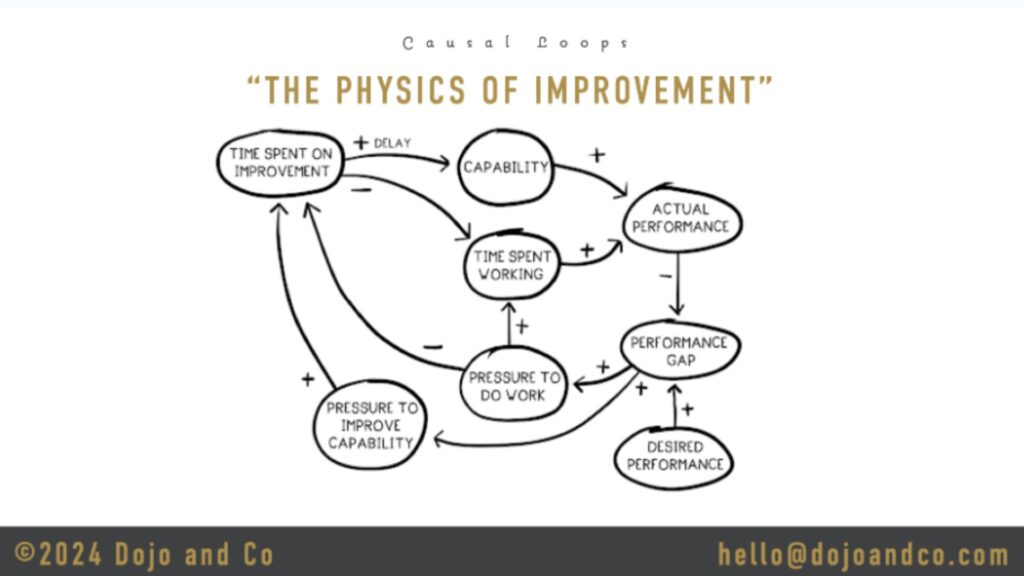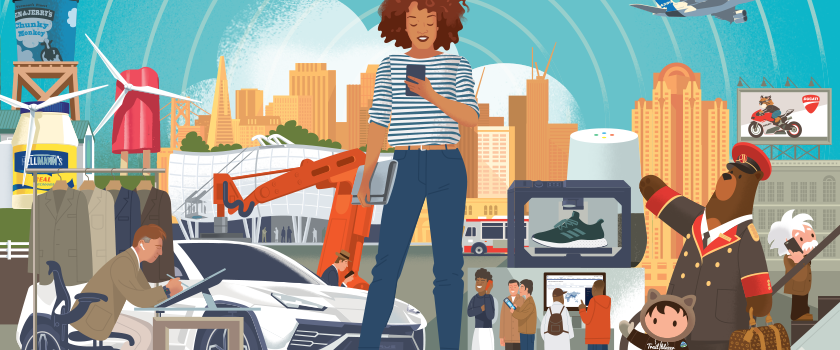In today’s resource-constrained learning and development (L&D) landscape, professionals are increasingly turning to artificial intelligence (AI) as a force multiplier. But while much of the conversation around AI in L&D remains theoretical, Brick Maier is taking a hands-on approach to show how AI is already reshaping instructional design in real and practical ways.
At a recent TechKnowCon webinar, Brick Maier, Director of Learning and Development at HeatSpring and former Amazon knowledge management lead, delivered a comprehensive walkthrough of how AI tools can support every stage of course creation. From working with Subject Matter Experts (SMEs) to assessment design and multimedia production, his insights revealed the emerging playbook for AI-powered learning design.
Why AI in Learning Design Matters Now
L&D professionals face mounting pressure to deliver high-impact training at speed and scale. Traditional methods often fall short, particularly in tech-forward environments where knowledge is complex, constantly changing, and spread across multiple stakeholders. AI offers a path to accelerate workflows, increase quality, and reduce development time—but only if used thoughtfully.
Brick’s session focused not just on the tools themselves, but on the principles of grounded AI, expert-in-the-loop workflows, and scalable systems for content generation. These concepts are essential for L&D teams that want to move beyond the hype and implement AI in meaningful ways.
Building a 3-Hour Course Using AI: A Real Case Study
One of the most compelling parts of the webinar was a real-world case study. Brick walked attendees through how he built a 3-hour certification course using AI tools from start to finish. The content was derived from over 70,000 words of dense, government-issued technical PDFs, which he transformed into structured learning materials including slide decks, assessments, and narrated videos.
The key to success? Starting with a knowledge repository and applying AI to structure, extract, and enhance that content while keeping a human expert in the loop at every stage.
Step 1: AI-Powered SME Collaboration
Collaborating with SMEs is often one of the biggest bottlenecks in course creation. Brick showcased how AI can assist in extracting key insights from large documents, summarizing critical points, and organizing content in ways that make it easier for SMEs to validate and refine.
By using grounded AI techniques that only analyze provided documents (rather than pulling from the web), Brick ensured both accuracy and security. He emphasized that while AI can drastically speed up this phase, it must be paired with regular SME review to prevent hallucinations and maintain credibility.
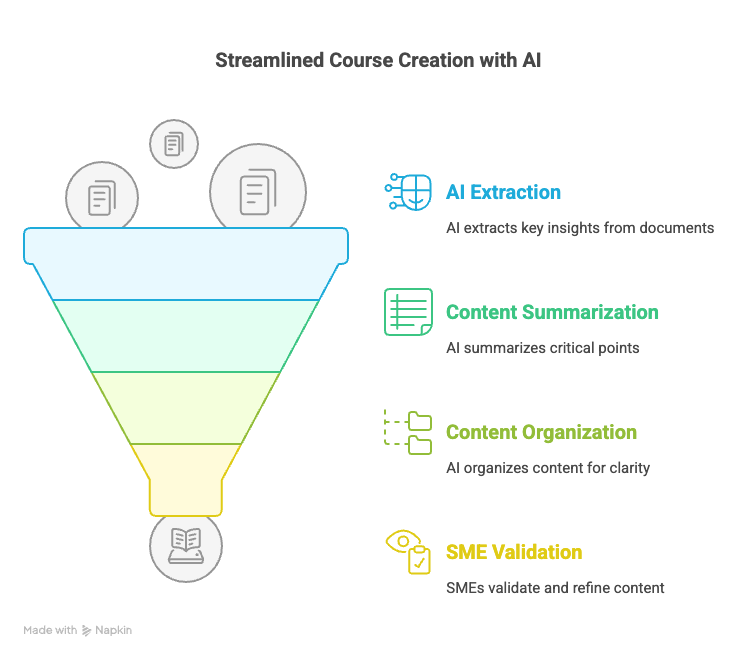
Step 2: Designing Knowledge Repositories with AI
Brick highlighted the importance of structured knowledge repositories as the foundation for scalable learning experiences. Using tools like Claude from Anthropic, he was able to build custom prompts that transformed large, unstructured documents into JSON or Markdown formatted outputs ready for instructional design.
This structured approach allowed for quick updates, modular content reuse, and better alignment with organizational objectives. Brick’s use of standardized formats also made it easier to plug outputs into LMS platforms or multimedia production tools.
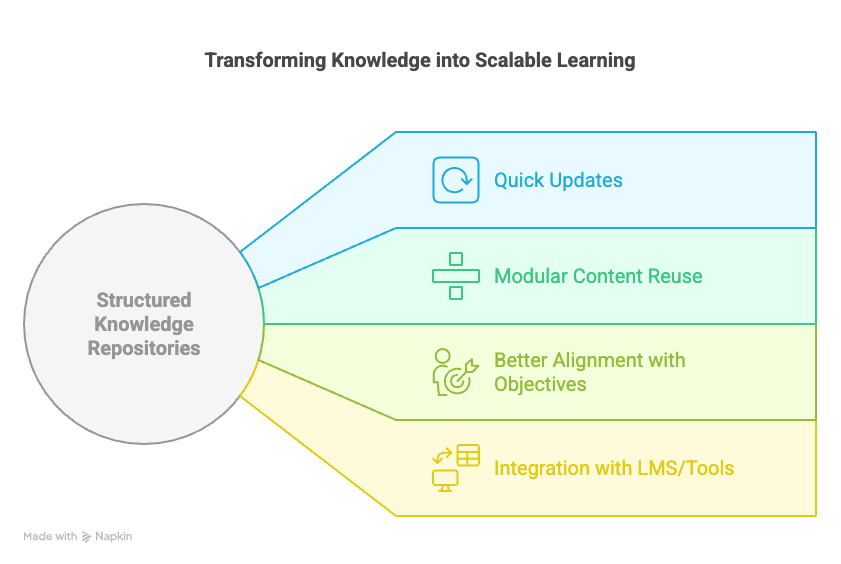
Step 3: Automating Content Development Workflows
Once the knowledge was organized, Brick used AI to generate full course outlines, slide decks, and speaker notes. His approach involved:
- Providing learning objectives
- Supplying prior knowledge assumptions
- Structuring prompts for consistent formatting
The results were impressive. Instead of manually creating hundreds of slides, he was able to automate the first draft and refine with SME input. This process not only saved time but also improved consistency across the course.

Step 4: Accelerating Multimedia Production
Visual and audio content is critical for learner engagement, yet also time-consuming to produce. Brick demonstrated how AI tools can assist in both image generation and text-to-speech narration.
Using platforms like Imagen and Eleven Labs, he was able to:
- Convert slide speaker notes into high-quality AI voiceovers
- Create custom illustrations for complex technical concepts
- Adapt image styles based on audience needs (e.g., realistic vs. stylized)
This approach allowed his small team to produce polished multimedia assets quickly and affordably.
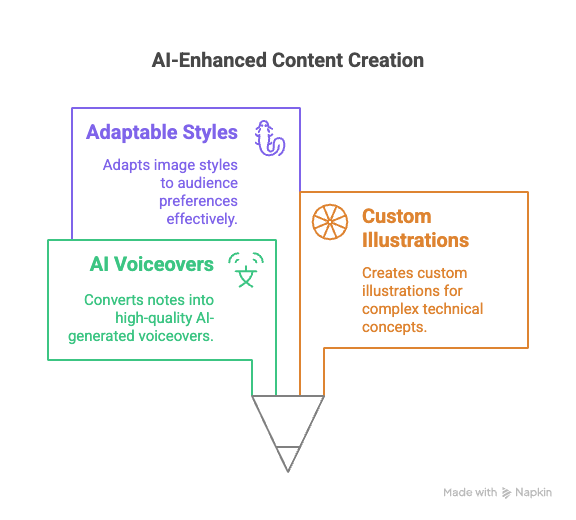
Step 5: Creating Smart Assessments with AI
Assessment design is often overlooked but essential for effective learning. Brick used AI to generate scenario-based assessments that aligned directly with course objectives.
By feeding the AI a completed slide deck and context, he was able to generate quizzes, knowledge checks, and even full exams. These were validated by real SME exam writers and built into the learning platform using structured formats that support instant feedback and adaptive learning.
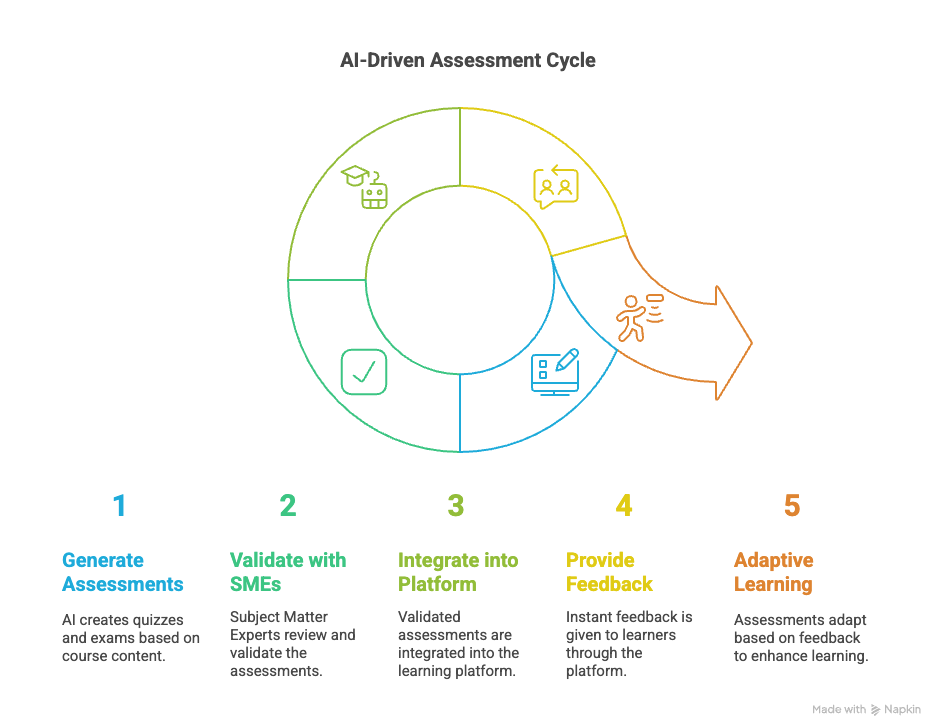
The Role of Human Expertise in AI Workflows
Throughout the session, Brick reinforced the importance of the expert-in-the-loop model. AI can accelerate and amplify instructional design, but it should not operate in a vacuum. Human judgment, context, and quality assurance are critical.
In fact, one of the key takeaways was the balance between AI’s speed and human deliberation. While AI can generate content in minutes, SME review ensures that what is produced is accurate, engaging, and instructionally sound.
What Makes Brick’s Approach Unique
What sets Brick’s work apart is its pragmatic orientation. Rather than relying on generic prompts or flashy tech demos, his workflows are tailored, grounded in real instructional challenges, and refined through hands-on iteration.
His experience at Amazon shaped his understanding of rapid knowledge delivery, while his current role at HeatSpring allows him to experiment with cutting-edge tools in a real production environment. The result is a replicable methodology that L&D teams across industries can adapt to their needs.
Why This Matters for L&D Teams Today
AI adoption in L&D is no longer optional. As organizations seek to scale learning while reducing costs, the ability to leverage AI responsibly will become a competitive advantage.
Brick’s webinar offers a roadmap for how to start:
- Begin with real, structured knowledge
- Use AI to accelerate but not replace human input
- Design with scalability, accuracy, and engagement in mind
Whether you’re a solo instructional designer or part of a large enterprise team, these principles can help you deliver better learning outcomes faster.
Final Thoughts: Learn from the Leaders
The TechKnowCon webinar series continues to highlight innovators like Brick Maier who are redefining what learning looks like in the age of AI. This session was not just about tools, but about mindset, methodology, and real-world application.
If you’re exploring how to integrate AI into your L&D strategy, this is essential viewing. Watch the full session, apply the frameworks, and bring these ideas into your organization.
Watch the full webinar and get inspired to rethink your learning design with AI.
Check out our podcast episode with Brick: https://linktr.ee/PlusPlus.co
Learn more at https://techknowcon.io
